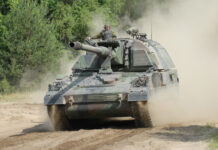In partnership with the US Air Force (USAF), Lockheed Martin’s Skunk Works has completed the first flight of the U-2 Dragon Lady’s Avionics Tech Refresh (ATR) programme, Lockheed Martin announced on 26 September 2023.
The flight tested a number of new advanced avionics capabilities installed on the U-2 reconnaissance aircraft as part of the USD 50 M (EUR 47.3 M) ATR contract awarded by the USAF in 2020. These include: an updated avionics suite (communications, navigation, display, etc) that modernises the U-2’s onboard systems to readily accept and use new technology; a new mission computer designed to the USAF’s open mission systems (OMS) standard that enables the U-2 to integrate with systems across the air, space, sea, land and cyber domains at disparate security levels; and new modern cockpit displays to make pilot tasks easier while enhancing presentation of the data the aircraft collects, enabling faster, better-informed decisions.

During its first ATR-enabled fight the U-2 successfully performed a low-altitude functional check flight to integrate its new avionics, cabling and software.
“The successful first flight of the U-2 Avionics Tech Refresh is a significant moment in our journey to rapidly and affordably field new capabilities,” Sean Thatcher, U-2 ATR programme manager at Lockheed Martin Skunk Works, was quoted as saying in a company press release. “Leveraging the platform’s open architecture, we’re expediting these capabilities needed for the future Joint All-Domain Operations battlespace.”
The ATR first flight marks a milestone in the U-2’s modernisation efforts and its path to be the first fully OMS-compliant aircraft in the USAF inventory. Further testing will solidify a mature software baseline before mission systems are introduced to ensure both functionality and interoperability to meet operational needs.
A high-altitude reconnaissance aircraft, the then Lockheed U-2 was first introduced into USAF service in 1956. The air force still has 26 U-2S airframes in service, according to the 2023 edition of the International Institute for Strategic Studies’ The Military Balance. However, under the Department of the Air Force’s Future Years Defense Program (FYDP) the U-2 fleet is due to be fully retired by 2026, when its mission will almost certainly taken up by an unmanned aerial vehicle (UAV), with one likely candidate being the classified Northrop Grumman RQ-180 stealth UAV.
Peter Felstead



